Publikációk
Publikációk kutatónként
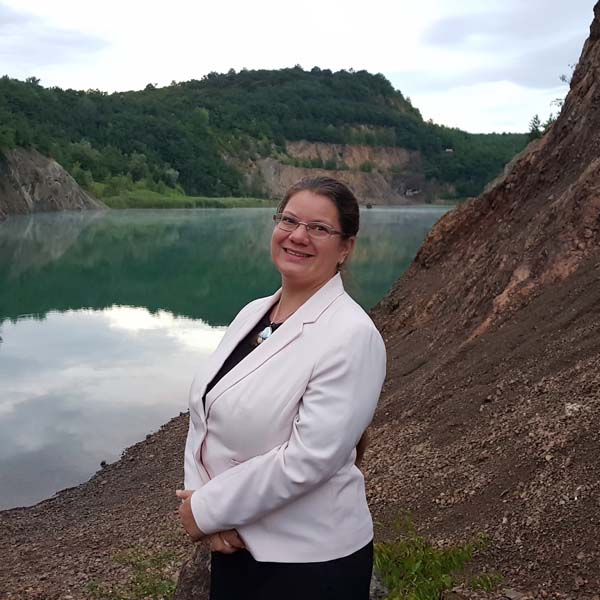
Bodor Emese

Botfalvai Gábor
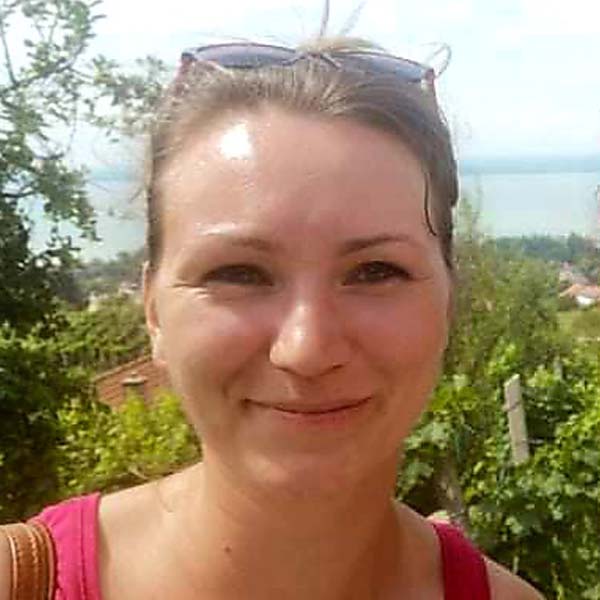
Gere Kinga

Magyar János

Makádi László
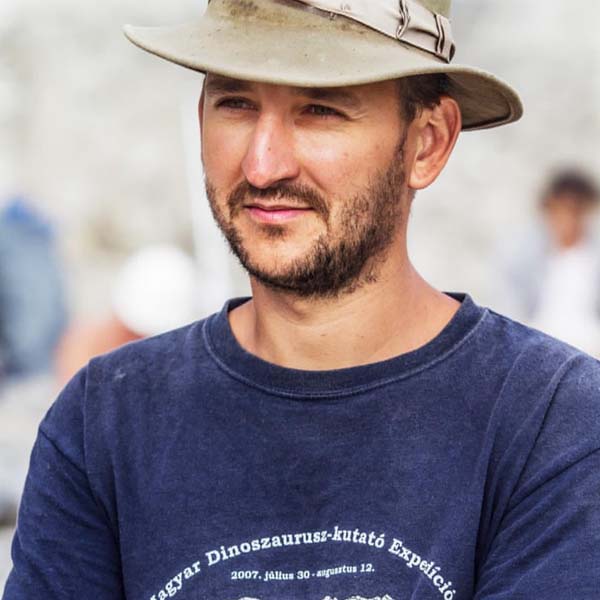
Ősi Attila
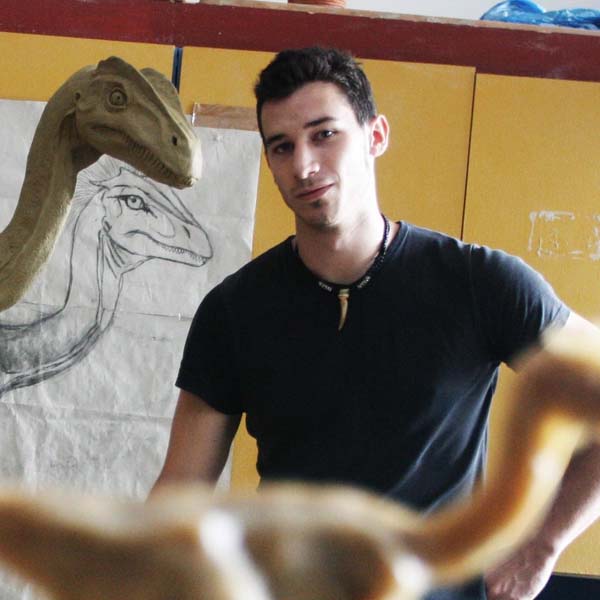
Pecsics Tibor
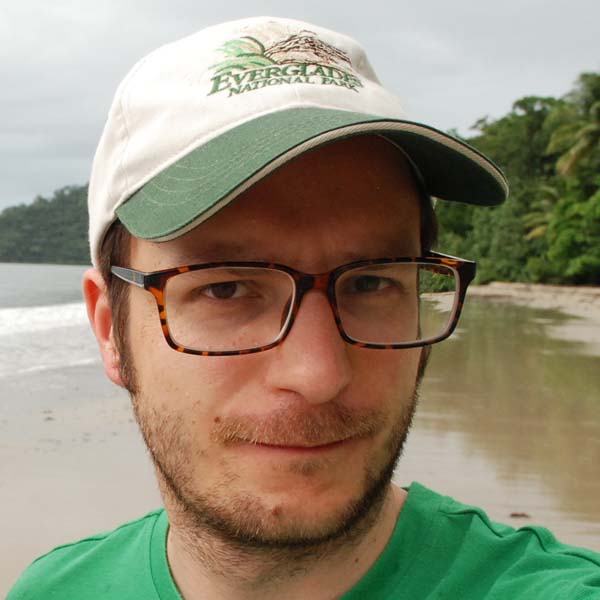
Rabi Márton

Segesdi Martin

Szabó Márton

Szentesi Zoltán

Bodor Emese

Botfalvai Gábor

Gere Kinga

Magyar János

Makádi László

Ősi Attila

Pecsics Tibor

Rabi Márton

Segesdi Martin

Szabó Márton

Szentesi Zoltán

Bodor Emese

Botfalvai Gábor

Gere Kinga

Magyar János

Makádi László

Ősi Attila

Pecsics Tibor

Rabi Márton

Segesdi Martin

Szabó Márton

Szentesi Zoltán
Összesített lista
138) M. Segesdi és Ősi, A. (in press). Sauropterygian remains from the Middle Triassic of
Villány, Hungary – new information on the aquatic reptile fauna of Tisza Megaunit
(Triassic southern Eurasian shelf region). Palaeobiodiversity and Palaeoenvironments
137) Kocsis, L., Botfalvai, G., Qamarina, Q., Razak, H., Király, E., Lugli, F., Wings, O.,
Lambertz, M., Raven, H., Briguglio, A., Rabi, M., (in press): Geochemical analyses suggest
stratigraphic origin and late Miocene age of reworked vertebrate remains from Penanjong
Beach in Brunei Darussalam (Borneo). Historical Biology.
136) Ősi, A., Magyar, J. Rosta, K., Vickaryous, M. (2021) Cranial ornamentation in the Late
Cretaceous nodosaurid ankylosaur Hungarosaurus. PeerJ, 9:e11010
135) Botfalvai, G., Csiki-Sava, Z., Kocsis, L., Albert, G., Magyar, J., Bodor, E:R:, Țabără, D.,
Ulyanov, A., Makádi, L., (2021): ‘X’marks the spot! Sedimentological, geochemical and paleontological
investigations of the Late Cretaceous (Maastrichtian) vertebrate fossil localities from
Vălioara Valley (Densuş-Ciula Formation, Haţeg Basin, Romania). Cretaceous Research, 104781
134) Gere, K., Bodor, E.R., Makádi, L., Ősi, A. (2021): Complex food preference analysis of
the Late Cretaceous (Santonian) lizards from Iharkút (Bakony Mountains, Hungary).-
Historical Biology, 1-17.
133) Botfalvai, G., Prondvai, E., Ősi, A., (2020): Living alone or moving in herds? A holistic approach highlights complexity in the social lifestyle of Cretaceous ankylosaurs. Cretaceous Research, 104633.
132) Kocsis, L., Botfalvai, G., Qamarina, Q., Razak, H., Király, E., Lugli, F., Wings, O., Lambertz, M., Raven, H., Briguglio, A., Rabi, M., (2020): Geochemical analyses suggest stratigraphic origin and late Miocene age of reworked vertebrate remains from Penanjong Beach in Brunei Darussalam (Borneo). Historical Biology, Historical Biology, 1-12.
131) SZABÓ, M. & FŐZY, I. (2020). Asteracanthus (Hybodontiformes: Acrodontidae) remains from the Jurassic of Hungary, with the description of a new species and with remarks on the taxonomy and paleobiology of the genus. Neues Jahrbuch für Geologie und Paläontologie – Abhandlungen, 297 (3): 295 – 309
130) Szabó, M. (2020). A Late Jurassic (Kimmeridgian–early Tithonian) fish fauna of the Eperkés-hegy (Olaszfalu, Bakony Mts., Hungary): the oldest record of Notidanodon Cappetta, 1975 and a short revision of Mesozoic Hexanchidae. Palaeobiodiversity and Palaeoenvironments, 100(1), 151-170.
129) Szabó, M., & Kocsis, L. (2020). Supplementary data on the Middle Miocene (Badenian) fish assemblage of Nyirád (Hungary): revision and new results on faunal composition and paleoenvironment. Palaeontographica Abteilung A, 121-191.
128) Fijałkowska-Mader, A., Jewuła, K., & Bodor, E. (2020). Record of the Carnian Pluvial Episode in the Polish microflora. Palaeoworld.
127) Solt, P., Szuromi-Korecz, A., & Ősi, A. (2020). New Late Cretaceous (Coniacian) sauropod tracks from Hvar Island, Croatia. Central European Geology.
126) Gere, K., Scheyer, T. M., Makádi, L., & Ősi, A. (2020). Placodont remains (Sauropsida, Sauropterygia) from the Triassic of Hungary (Transdanubian Range and Villány Mountains). Palaeobiodiversity and Palaeoenvironments, 1-17.
125) ŐSI, A., SZABÓ, M., & BOTFALVAI, G. (2020). Tanystropheus and other archosauromorph reptile remains from the Middle and Late Triassic of Villány (Villány Hills, Hungary). GEOLOGICA CARPATHICA, 71(3), 264-273.
124) Szabó, M., & Pálfy, J. (2020). Dapedium sp. from the Toarcian (Lower Jurassic) Úrkút Manganese Ore Formation (Bakony Mts., Hungary) and an overview of diversity of dapediiform fishes. Palaeobiodiversity and Palaeoenvironments, 100(1), 179-195.
123) Kocsis, L., Razak, H., Briguglio, A., & Szabó, M. (2019). First report on a diverse Neogene cartilaginous fish fauna from Borneo (Ambug Hill, Brunei Darussalam). Journal of Systematic Palaeontology, 17(10), 791-819.
122) Szentesi, Z., Sebe, K., & Szabó, M. (2019). Giant salamander from the Miocene of the Mecsek mountains (Pécs-Danitzpuszta, southwestern Hungary). PalZ, 1-14.
121) Botka, D., Magyar, I., Csoma, V., Tóth, E., Šujan, M., Ruszkiczay-Rüdiger, Z., … Szabó, M.& Baranyi, V. (2019). Integrated stratigraphy of the Guşteriţa clay pit: a key section for the early Pannonian (late Miocene) of the Transylvanian Basin (Romania). Austrian Journal of Earth Sciences, 112(2), 221-247.
120) Barbacka, M., Kustatscher, E., & Bodor, E. R. (2019). Ferns of the Lower Jurassic from the Mecsek Mountains (Hungary): taxonomy and palaeoecology. PalZ, 93(1), 151-185.
119) Szabó, M., Botfalvai, G., & Ősi, A. (2019). Taxonomical and palaeoecological investigations of the chondrichthyan and osteichthyan fish remains from the Middle-Late Triassic deposits of the Villány Hills (Southern Hungary). Geobios, 57, 111-126.
118) Ősi, A., Szabó, M., Kollmann, H., Wagreich, M., Kalmár, R., Makádi, L., … & Summesberger, H. (2019). Vertebrate remains from the Turonian (Upper Cretaceous) Gosau Group of Gams, Austria. Cretaceous Research, 99, 190-208.
117) Ősi, A., Botfalvai, G., Albert, G., & Hajdu, Z. (2019). The dirty dozen: taxonomical and taphonomical overview of a unique ankylosaurian (Dinosauria: Ornithischia) assemblage from the Santonian Iharkút locality, Hungary. Palaeobiodiversity and Palaeoenvironments, 99(2), 195-240.
116) Botfalvai, G., Győri, O., Pozsgai, E., Farkas, I. M., Sági, T., & Szabó, M. (2019). Sedimentological characteristics and paleoenvironmental implication of Triassic vertebrate localities in Villány (Villány Hills, Southern Hungary). Geologica Carpathica, 70(2), 135-152.
115) Rabi, M., Bastl, K., Botfalvai, G., Evanics, Z., & Peigné, S. (2018). A new carnivoran fauna from the late Oligocene of Hungary. Palaeobiodiversity and Palaeoenvironments, 98(3), 509-521.
114) Pazonyi, P., Virág, A., Gere, K., Botfalvai, G., Sebe, K., Szentesi, Z., … & Korecz, L. (2018). Sedimentological, taphonomical and palaeoecological aspects of the late early Pleistocene vertebrate fauna from the Somssich Hill 2 site (South Hungary). Comptes Rendus Palevol, 17(4-5), 296-309.
113) Ősi, A., Young, M. T., Galácz, A., & Rabi, M. (2018). A new large-bodied thalattosuchian crocodyliform from the Lower Jurassic (Toarcian) of Hungary, with further evidence of the mosaic acquisition of marine adaptations in Metriorhynchoidea. PeerJ, 6, e4668.
112) Albert, G., Botfalvai, G., & Ősi, A. (2018). Mapping the past: GIS and intrasite spatial analyses of fossil deposits in paleontological sites and their applications in taxonomy, taphonomy and paleoecology. PALAEONTOLOGIA ELECTRONICA, 21(3), 1-22.
111) Szabó, M., & Ősi, A. (2017). The continental fish fauna of the Late Cretaceous (Santonian) Iharkút locality (Bakony Mountains, Hungary). Central European Geology, 60(2), 230-287.
110) Szabó, M., Botfalvai, G., Kocsis, L., Carnevale, G., Sztanó, O., Evanics, Z., & Rabi, M. (2017). Upper Oligocene marine fishes from nearshore deposits of the Central Paratethys (Máriahalom, Hungary). Palaeobiodiversity and Palaeoenvironments, 97(4), 747-771.
109) Barbacka, M., Pacyna, G., Kocsis, Á. T., Jarzynka, A., Ziaja, J., & Bodor, E. (2017). Changes in terrestrial floras at the Triassic-Jurassic Boundary in Europe. Palaeogeography, Palaeoclimatology, Palaeoecology, 480, 80-93.
108) Blanco, A., Szabó, M., Blanco-Lapaz, À., & Marmi, J. (2017). Late Cretaceous (Maastrichtian) Chondrichthyes and Osteichthyes from northeastern Iberia. Palaeogeography, Palaeoclimatology, Palaeoecology, 465, 278-294.
107) Polonkai, B., Görög, Á., Raveloson, A., Bodor, E., & Székely, B. (2017). Possibilities of 3-D modelling and quantitative morphometric analysis of decimeter-sized Echinoids using photogrammetric approach. EGUGA, 1510.
106) Galambos, C., Makádi, L., Bodor, E., Péterdi, B., Lantos, Z., & Palotás, K.(2017) From the depths of a drawer to Google Earth: Digital exhibition of Hungarian fossils, decorative stones and minerals.
105) Ősi, A., & Pereda-Suberbiola, X. (2017). Notes on the pelvic armor of European ankylosaurs (Dinosauria: Ornithischia). Cretaceous Research, 75, 11-22.
104) Ősi, A., Csiki-Sava, Z., & Prondvai, E. (2017). A sauropod tooth from the Santonian of Hungary and the European Late Cretaceous ‘sauropod hiatus’. Scientific reports, 7(1), 1-8.
103) Segesdi, M., Botfalvai, G., Bodor, E. R., Ősi, A., Buczkó, K., Dallos, Z., … & Földes, T. (2017). First report on vertebrate coprolites from the Upper Cretaceous (Santonian) Csehbánya Formation of Iharkút, Hungary. Cretaceous Research, 74, 87-99.
102) Ősi, A., Prondvai, E., Mallon, J., & Bodor, E. R. (2017). Diversity and convergences in the evolution of feeding adaptations in ankylosaurs (Dinosauria: Ornithischia). Historical Biology, 29(4), 539-570.
101) Virág, A., Ősi, A. (2017) Morphometry, microstructure and wear pattern of neornithischian dinosaur teeth from the Upper Cretaceous Iharkút locality (Hungary) Anatomical Record.
100) Prondvai, E., Botfalvai, G., Stein, K., Szentesi, Z., Ősi, A., (2017): Collection of the thinnests: a unique eggshell assememblage from the Late Cretaceous vertebrate locality of Hungary. Central European Geology
99) Botfalvai, G., Csiki-Sava, Z., Grigorescu, D., Vasile, S., (2017): Taphonomical and palaeoecological investigation of the Late Cretaceous (Maastrichtian) Tustea vertebrate assemblage (Romania; Hatag Basin) – insights into an unique dinosaur nesting locality. Palaeogeography, Palaeoclimatology, Palaeoecology
98) Blanco, A., Szabó, M., Blanco-Lapaz, A., Marmi, J. (2017): Late Cretaceous (Maastrichtian) Chondrichthyes and Osteichthyes from northeastern Iberia. Palaeogeography, Palaeoclimatology, Palaeoecology, 465, 278-294. DOI: 10.1016/j.palaeo.2016.10.039
97) Szabó, M., Kocsis, L. (2016): A preliminary report on the early Oligocene (Rupelian, Kiscellian) selachians from the Kiscell Formation (Buda Mts, Hungary), with the re-discovery of Wilhelm Weiler’s shark teeth. Fragmenta Palaeontologica Hungarica
96) Szabó, M., Kocsis, L. (2016): A new Middle Miocene selachian assemblage (Chondrichthyes, Elasmobranchii) from the Central Paratethys (Nyirád, Hungary): implications for temporal turnover and biogeography. Geologica Carpathica, 67(6), 573-594.,
95) Botfalvai G, Haas, J., Mindszenty A., Ősi, A. 2016. Facies Architecture and Paleoenvironmental implications of the Upper Cretaceous (Santonian) Csehbánya Formation at the Iharkút vertebrate locality (Bakony Mountains, northwestern Hungary) Palaeogeography, Palaeoclimatology, Palaeoecology 441(4), 659–678.
94) Ősi, A. Bodor, E., Makádi, L. Rabi, M. 2016. Vertebrate remains from the Upper Cretaceous (Santonian) Ajka Coal Formation, western Hungary. Cretaceous Research, 57, 228–238.
93) Szabó, M., Gulyás, P., Ősi, A. (2016): Late Cretaceous (Santonian) Atractosteus (Actinopterygii, Lepisosteidae) remains from Hungary (Iharkút, Bakony Mountains). Cretaceous Research, 60, 239-252.
92) Szabó, M., Gulyás, P., Ősi, A. (2016): Late Cretaceous (Santonian) pycnodontid (Actinopterygii, Pycnodontidae) remains from the freshwater deposits of the Csehbánya Formation (Iharkút, Bakony Mountains, Hungary). Annales de Paléontologie, 102, 123-134.
91) Prondvai E. 2016. Medullary bone in fossils: function, evolution and significance in growth curve reconstructions of extinct vertebrates. Journal of Evolutionary Biology (online December 2016, DOI: 10.1111/jeb.13019).
90) Ősi,A, Prondvai E, Mallon J, Bodor ER. 2016. Diversity and convergences in the evolution of feeding adaptations in ankylosaurs (Dinosauria: Ornithischia). Historical Biology (online July 2016, DOI: 10.1080/08912963.2016.1208194).
89) Dyke G, Vremir M, Brusatte SL, Bever GS, Buffetaut E, Chapman S, Csiki-Sava Z, Kellner A, Martin E, Naish D, Norell M, Ősi A, Pinheiro FL, Prondvai E, Rabi M, Rodrigues T, Steel L, Tong H, Vila Nova BC, Witton M. 2015. Thalassodromeus sebesensis – a new name for an old turtle. Comment on “Thalassodromeus sebesensis, an out of place and out of time Gondwanan tapejarid pterosaur”, Grellet-Tinner and Codrea (online July 2014 DOI 10.1016/j.gr.2014.06.002). Gondwana Research, 27: 1680-1682.
88) Ősi, A. 2015. The European ankylosaur record: a review. Hantkeniana, 10, 89-106.
87) Ősi, A., Rabi, M., Makádi, L. 2015. An enigmatic crocodyliform tooth from the bauxites of western Hungary suggests hidden mesoeucrocodylian diversity in the Early Cretaceous European archipelago. Peer J.
86) Csiki-Sava Z, Buffetaut E. Ősi A, Pereda-Suberbiola X, Brusatte SL. 2015. Island life in the Cretaceous – faunal composition, biogeography, evolution, and extinction of land-living vertebrates on the Late Cretaceous European archipelago. Zookeys. 469, 1–161.
85) Botfalvai G, Ősi A, Mindszenty A. 2015. Taphonomic and paleoecologic investigations of the Late Cretaceous (Santonian) Iharkút vertebrate assemblage (Bakony Mts, Northwestern Hungary). Palaeogeography, Palaeoclimatology, Palaeoecology, 417, 379–405.
84) Ősi, A., Barrett, P., Földes, T., Tokai, R. 2014. Wear Pattern, Dental Function, and Jaw Mechanism in the Late Cretaceous Ankylosaur Hungarosaurus. The Anatomical Record. DOI 10.1002/ar.22910
83) Makádi, L., Rabi, M., Csengődi, D., Szentesi, Z., Ősi, A. 2014. Bakonyi dinoszauruszok és más hazai mezozóos gerincesek a Magyar Természettudományi Múzeum gyűjteményében – az elmúlt évek világhírű felfedezései. Annales Historico-naturales Musei Nationalis Hungarici.
82) Ősi, A., Codrea, V., Prondvai, E., Csiki-Sava, Z. 2014. New ankylosaurian material from the Upper Cretaceous of Transylvania. Annales de Paléontologie, 100(3): 257-271.
81) Prondvai E. 2014. Comparative bone histology of rhabdodontid dinosaurs. Palaeovertebrata 38(2)-el. pp. 31, Online ISSN: 2274-0333.
80) Prondvai E., Stein, KHW. 2014. Medullary bone-like tissue in the mandibular symphyses of a pterosaur suggests non-reproductive significance. Scientific Reports. 4:6253 | DOI: 10.1038/srep06253.
79) Prondvai, E., Stein, KHW., Ricqlès, A. de, Cubo, J. 2014. Development-based revision of bone tissue classification: the importance of semantics for science. Biological Journal of the Linnean Society, 112: 799-816.
78) Prondvai, E. Bodor, ER., Ősi, A. 2014. Does morphology reflect osteohistology-based ontogeny? A case study of Late Cretaceous pterosaur jaw symphyses from Hungary reveals hidden taxonomic diversity. Paleobiology, 40: 288-321.
77) Botfalvai, G., Prondvai, E., Ősi, A. 2014. Inferred bite marks on a Late Cretaceous (Santonian) bothremydid turtle and a hylaeochampsid crocodilian from Hungary. Cretaceous Research, 50: 304-317.
76) Stein, K., Prondvai, E. 2014. Rethinking the nature of fibrolamellar bone: an integrative biological revision of sauropod plexiform bone formation. Biological Reviews, 89: 24-47.
75) Martin, J.E., M. Rabi, Z. Csiki-Sava, S. Vasile. 2014. Cranial Morphology Of Theriosuchus sympiestodon and the Widespread Occurence of Theriosuchus in the Late Cretaceous Of Europe. Jorunal of Paleontology.
74) Rabi, M., V.B. Sukhanov, V. Egorova, I. Danilov, W.G. Joyce. 2014. Osteology, Relationships, And Ecology Of Annemys (Testudines: Eucryptodira) From The Late Jurassic Of Shar Teg, Mongolia And A Phylogenetic Definition Of Xinjiangchelyidae, Sinemydidae, And Macrobaenidae. Journal of Vertebrate Paleontology.
73) Delfino, M., T.M. Scheyer, F. Chesi, T. Fletcher, R. Gemel, M. Rabi, S.W. Salisbury. 2013. Gross morphology and microstructure of type locality ossicles of Psephophorus polygonus Meyer, 1847 (Testudines, Dermochelyidae). Geological Magazine.
72) Makádi, L. 2013. The first known European chamopsiid lizard (Squamata) from the Upper Cretaceous of Europe (Csehbánya Formation; Hungary, Bakony Mts). Annales de Paléontologie
71) Ősi A., E. Pozsgai, G. Botfalvai, A. E. Götz, L. Makádi, Zs. Hajdu, D. Csengődi, G. Czirják, K. Sebe, Z. Szentesi (2013) The first report of Triassic vertebrate assemblages from the Villány Hills (Southern Hungary). Central European Geology.
70) Rabi, M., C-F Zhou, O. Wings, G. Sun, W.G. Joyce. 2013. A New Xinjiangchelyid Turtle from the Middle Jurassic of Xinjiang, China and the Evolution of the Basipterygoid Process in Mesozoic Turtles. BMC Evolutionary Biology.
69) Virág, A., Szentesi, Z., Cséfán, T. & Kellner, L.M. 2013. The Late Pleistocene microvertebrate fauna of the Vaskapu Cave (North Hungary) and its taphonomical, biostratigraphical and palaeoecological implications. Hantkeniana.
68) Ősi, A., Prondvai, E. 2013. Sympatry of two ankylosaurs (Hungarosaurus and cf. Struthiosaurus) in the Santonian of Hungary. Cretaceous Research. http://dx.doi.org/10.1016/j.cretres.2013.03.006.
67) Ősi, A. 2013. The evolution of jaw mechanism and dental function in heterodont crocodyliforms. Historical Biology. DOI:10.1080/08912963.2013.777533.
66) Ősi, A., Pozsgai, E., Sebe, K. 2013. Villány, Templom-hegy (siklóbevágás) és Somssich-hegy (építkezési terület): Középső-triász Templomhegyi Dolomit Tagozat, felső-triász Mészhegyi Homokkő Formáció, alsó-jura Somssichhegyi Mészkő Formáció. 16. Magyar Őslénytani Vándorgyűlés, Kirándulásvezető, pp. 59-62.
65) Stein, K., és Prondvai, E. 2013. Rethinking the nature of fibrolamellar bone: an integrative biological revision of sauropod plexiform bone formation. Biological Reviews, n/a. doi: 10.1111/brv.12041
64) Szentesi, Z., Gardner, J.D. & Venczel, M. 2013. Albanerpetontid amphibians from the Late Cretaceous (Santonian) of Iharkút, Hungary, with remarks on regional differences in Late Cretaceous Laurasian amphibian assemblages. Canadian Journal of Earth Sciences 50(3): 268-281.
63) Bodor, E. R., Baranyi, V., 2012. Palynomorphs of the Normapolles group and related plant mesofossils from the Iharkút vertebrate site, Bakony Mountains (Hungary). Central European Geology.
62) Bodor, E. R. és Barbacka, M. 2012, The remarkable world of the ferns in the Mecsek Coal Formation with special focus on the genera Todites and Cladophlebis (SW Hungary). e-Acta Naturalia Pannonica, 3, 1-10.
61) Bodor, E. R., Baranyi, V., Heřmanová, Z. 2012. The earliest Sabiaceae fossils from Hungary. Hantkeniana, 7 (Monostori Jubile Volume), 11-18.
60) Makádi, L. Caldwell, M. W., Ősi, A. 2012. The First Freshwater Mosasauroid (Upper Cretaceous, Hungary) and a New Clade of Basal Mosasauroids”. PLoS ONE 7 (12): e51781. doi:10.1371/journal.pone.0051781
59) Ősi, A, Prondvai E, Butler R, Weishampel DB 2012. Phylogeny, histology and inferred body size evolution in a new rhabdodontid dinosaur from the Late Cretaceous of Hungary. PLoS ONE 7(9): e44318. doi:10.1371/journal.pone.0044318
58) Ősi, A. 2012. Dinoszauruszok Magyarországon. GeoLitera Kiadó, Szeged, pp. 168.
57) Ősi, A., L. Makádi, M. Rabi, Z. Szentesi, G. Botfalvai, P. Gulyás. 2012. The Late Cretaceous continental vertebrate fauna from Iharkút, western Hungary: a review. Bernissart Dinosaurs and Early Cretaceous Terrestrial Ecosystems (ed. P. Godefroit), Indiana University Press, pp. 533-568.
56) Prondvai, E., Stein, K, Ősi, A, and Sander, M. 2012. Reconstructing life history of Rhamphorhynchus from the first histological survey of an ontogenetic series. Plos One e31392. doi:10.1371/journal.pone.0031392
55) Rabi M, Tong H, Botfalvai G (2012) A new species of the side-necked turtle Foxemys (Pelomedusoides: Bothremydidae) from the Late Cretaceous of Hungary and the historical biogeography of the Bothremydini. Geological Magazine 149: 662-674.
54) Rabi, M., M. Vremir, H. Tong. 2012. Preliminary overview of Late Cretaceous turtle diversity in eastern Central Europe (Austria, Hungary, and Romania). Morphology and Evolution of Turtles: Origin and Early Diversification (eds: D. B. Brinkman, P. A. Holroyd, and J. D. Gardner), Springer, Dordrecht, pp. 307-336.
53) Company, J. & Szentesi, Z 2012. Amphibians from the Late Cretaceous Sierra Perenchiza Formation of Chera Basin (Valencia Province, Spain). Cretaceous Research, 37: 240-245.
52) Szentesi, Z. & Venczel, M. 2012. Egy fejlett béka a késő-kréta (santoni) Csehbányai Formációból (Iharkút, Bakony hegység). Földtani Közlöny 142,1: 445-468.
51) Szentesi, Z. & Venczel, M. 2012. A new discoglossid frog from the late Cretaceous (Santonian) of Hungary. Cretaceous Research, 34: 327-333.
50) Venczel, M. & Szentesi, Z. 2012. Locomotory techniques in Upper Cretaceous frogs (Iharkút, Hungary). Hantkeniana 7: 19-25.
49) Wings, O., M. Rabi, J.W. Schneider, L. Schwermann, G. Sun, C-F Zhou, W.G. Joyce. 2012. An enormous Jurassic turtle bone bed from the Turpan basin of Xinjiang, China. Naturwissenschaften 99: 925–935.
48) Buffetaut, E., Ősi, A., & Prondvai, E. 2011. The pterosaurian remains from the Grünbach Formation (Campanian, Gosau Group) of Austria: a reappraisal. Geological Magazine. 148: 334–339.
47) Ősi, A. and Barrett, P. M. 2011. Dental wear and oral food processing in Caiman latirostris: analogue for fossil crocodylians with crushing teeth. Neues Jahrbuch für Geologie und Paleontologie 261, 201-207.
46) Ősi, A. 2011. A Late Creatceous (Santonian) terrestrial ecosystem in the western Tethyan archipelago: the Central European Iharkút vertebrate site (Csehbánya Formation, Hungary). Paleontologia: Cenários de Vida, 4, 381-399.
45) Ősi, A. & Buffetaut, E. 2011. Additional non-avian theropod and bird remains from the early Late Cretaceous (Santonian) of Hungary and a review of the European abelisauroid record. Annales de Paleontologie, 97:35-49.
44) Ősi, A. 2011. Feeding-related characters in basal pterosaurs: implications from jaw mechanism, dental function and diet. Lethaia. 44: 136–152.
43) Ősi, A., Buffetaut, E. & Prondvai, E. 2011. New pterosaurian remains from the Late Cretaceous (Santonian) of Hungary (Iharkút, Csehbánya Formation). Cretaceous Research. 32:456-463.
42) Ősi,A., J. Pálfy, L. Makádi, Z. Szentesi, P. Gulyás, M. Rabi, G. Botfalvai, K. Hips. 2011. Early Jurassic (Hettangian) dinosaur tracksites from the Mecsek Mountains, Hungary. Ichnos. 18: 79–94.
41) Prondvai, E. and Ősi, A. 2011. Potential for intracranial movements in pterosaurs. The Anatomical Record 294:813–830.
40) Wang, X., Csiki, Z., Ősi, A., and Dyke, G. 2011. The first definitive record of a fossil bird from the upper Cretaceous (Maastrichtian), Haţeg Basin, Romania. Journal of Vertebrate Paleontology 31:227–230.
39) Dyke, G. & Ősi, A. 2010. Late Cretaceous birds from Hungary: implications for avian biogeography at the close of the Mesozoic. Geological Journal. 45: 434-444.
38) Martin, J.E., M. Rabi, Z. Csiki 2010. Survival of Theriosuchus (Mesoeucrocodylia: Atoposauridae) in a Late Cretaceous archipelago: a new species from the Maastrichtian of Romania. Naturwissenschaften 97: 845–854.
37) Ősi, A., Prondvai, E., Géczy, B. 2010. The history of Late Jurassic pterosaurs housed in Hungarian collections and the revision of the holotype of Pterodactylus micronyx Meyer, 1856 (the „Pester Exemplar”). Special Publications of the Geological Society. 343:277-286.
36) Ősi, A., Butler, R. & Weishampel, D. 2010. A Late Cretaceous ceratopsian dinosaur from Europe with Asian affinities. Nature 465:466-468.
35) Ősi, A., Apesteguía, S., and Kowalewski, M. 2010. Non-avian theropod dinosaurs from the early Late Cretaceous of Central Europe. Cretaceous Research 31:304-320.
34) Ősi, A., Prondvai, E., Frey, E., & Pohl, B. 2010. New interpretation of the palate of pterosaurs. The Anatomical Record 293:243–258.
33) Rabi, M., W.G. Joyce, O. Wings 2010. A review of the mesozoic turtles of the Junggar Basin (Xinjiang, Northwest China) and the paleobiogeography of Jurassic to Early Cretaceous Asian testudinates. Paleobiodiversity and paleoenvironments 90: 259–273.
32) Szentesi, Z. & Venczel, M. 2010. An advanced anuran from the Late Cretaceous (Santonian) of Hungary. Neues Jahrbuch für Geologie und Paläontologie –Abhandlungen 256, 3: 291-302.
31) Ősi, A. & Weishampel, D. B. 2009. Jaw mechanism and dental function in the Late Cretaceous basal eusuchian Iharkutosuchus. Journal of Morphology 270(8):903–920.
30) Kocsis, L., Ősi, A., Vennemann, T., Trueman, C. N., Palmer, M. R. 2009. Geochemical study of vertebrate fossils from the Upper Cretaceous (Santonian) Csehbánya Formation (Hungary): Evidence for a freshwater habitat of mosasaurs. Palaeogeography, Palaeoclimatology, Palaeoecology, 280, 532-542.
29) Ősi, A. & Prondvai, E. 2009. Forgotten pterosaurs in Hungarian collections: first description of Rhamphorhynchus and Pterodactylus specimens. Neues Jahrbuch für Geologie un Paleontologie. 252/2, 167-180.
28) Ősi, A. & Makádi, L. 2009. New remains of Hungarosaurus tormai (Ankylosauria, Dinosauria) from the Upper Cretaceous of Hungary: skeletal reconstruction and body mass estimation. Paläontologische Zeitschrift, 83, 227-245.
27) Ősi, A and Mindszenty, A. 2009. Iharkút, Dinosaur-bearing alluvial complex of the Csehbánya Formation. In: Cretaceous sediments of the Transdanubian Range. Field guide of the geological excursion organized by the Sedimentological Subcommission of the Hungarian Academy of Sciences and the Hungarian Geological Society. p. 51–63.
26) Prondvai, E. és Hone, D.W.E. 2009. New models for the wing extension in pterosaurs. Historical Biology, 20 (4): 237–254.
25) Barbacka, M. és Bodor, E. R. 2008, Systematic and palaeoenvironmental investigations of fossil ferns Cladophlebis and Todites from the Liassic of Hungary. Acta Palaeobotanica, 48 (2), 133–149.
24) Bodor, E. R. és Barbacka, M. 2008 Taxonomic implications of Liassic ferns Cladophlebis Brongniart and Todites Seward from Hungary. Palaeoworld, 17, 201-214.
23) Ősi, A. 2008. Enantiornithine bird remains from the Late Cretaceous of Hungary. Oryctos, 7:55–60.
22) Ősi, A. 2008. Cranial osteology of Iharkutosuchus makadii, a Late Cretaceous basal eusuchian crocodyliform from Hungary. Neues Jahrbuch für Geologie und Paleontologie, 248(3):279–299.
21) Rabi, M. & Botfalvai, G. 2008. A preliminary report on the Late Oligocene vertebrate fauna from Máriahalom, Hungary. Hantkeniana 6:177–185
20) Szentesi, Z. 2008. Bufo cf. viridis (Anura:Bufonidae) from the Middle Miocene diatomites of Szurdokpüspöki, northeastern Hungary. Central European Geology 51, 4: 315-324.
19) Ősi, A., Clark, J. M., & Weishampel, D. B. 2007. First report on a new basal eusuchian crocodyliform with multi-cusped teeth from the Upper Cretaceous (Santonian) of Hungary. Neues Jahrbuch für Geologie und Paleontologie, 243(2): 169–177.
18) Ősi, A. 2007. Iharkút, bauxit külfejtés, felső-kréta (santoni), Csehbányai Formáció. In: Pálfy, J. és Pazonyi, P. (eds.), Őslénytani kirándulások Magyarországon és Erdélyben. p. 120–124.
17) Ősi, A. & Főzy, I. 2007. A maniraptoran (Theropoda, Dinosauria) sacrum from the Upper Cretaceous of the Haţeg Basin (Romania) – in search of the lost pterosaurs of Baron Franz Nopcsa. Neues Jahrbuch für Geologie und Paleontologie, 246/2: 173–181.
16) Wanek, F., Ősi, A. és Főzy, I. 2007. Szentpéterfalva (Sinpetru), Sibisel-völgy, felső-kréta (maastrichti), Szentpéterfalvi Formáció. In: Pálfy, J. és Pazonyi, P. (eds.), Őslénytani kirándulások Magyarországon és Erdélyben. p. 230–233.
15) Hably, L., A. Pászti, L. Makádi. 2006. Stop 2: Pula, alginite mine: Pliocene Pula Alginite Formation, plant and vertebrate remains. Field Guide, 4rd Annual Meeting of the EAVP, Hantkeniana 5 (ed. P. Pazonyi), Hantkenpress, p. 122.
14) Makádi, L. 2006: Bicuspidon aff. hatzegienzis (Squamata: Teiidae) from the Upper Cretaceous Csehbánya Formation of Hungary, Bakony Mts. Acta Geologica Hungarica, 49(4), pp. 373-385.
13) Makádi, L., Botfalvai, G. & Ősi, A. 2006. Egy késő-kréta kontinentális gerinces fauna a Bakonyból: halak, kétéltűek, teknősök és gyíkok. Földtani Közlöny,136(4): 487–502.
12) Ősi, A. 2006. Felső-kréta (santoni) Csehbányai Formáció, gerinces maradványok. 9. Magyar Őslénytani Vándorgyűlés Kirándulásvezető, pp. 36-38.
11) Ősi, A. 2006. Iharkút, the first Hungarian Late Cretaceous continental vertebrate locality. Excursion guide for the 4th Annual EAVP Meeting, Budapest. Hantkeniana, 116–120.
10) Ősi, A. & Rabi, M. 2006. Egy késő-kréta kontinentális gerinces fauna a Bakonyból: krokodilok, dinoszauruszok, pteroszauruszok és madarak. Földtani Közlöny, 136/4, 503–526.
9) Rabi, M. & Botfalvai, G. 2006: A new bothremydid (Chelonia:Pleurodira) fossil assemblage from the Late Cretaceous (Santonian) of Hungary – additional studies in the historical paleobiogeography of Late Cretaceous bothremydids. – Hantkeniana 5 (Abstract Volume of 4th Annual Meeting of the European Association of Vertebrate Paleontologists, Budapest), pp. 61–65.
8) Szentesi, Z., Makádi, L., Rabi, M., Botfalvai, G. & Ősi, A. 2006. Felső-kréta gerinces fauna a Csehbányai Formációból (Iharkút). Bányászati és Kohászati Lapok, Bányászat 139:45-49.
7) Szentesi, Z., Makádi, L., Rabi, M., Botfalvai, G. & Ősi, A. 2006. Felső-kréta gerinces fauna a Csehbányai Formációból (Iharkút). Bányászati és Kohászati Lapok – Bányászat 139, 6: 45-49.
6) Ősi, A., Barbacka, M. és Szente, I. 2005. Dino-ösvény: kora-jura dinoszaurusz lábnyomok a Mecsekből. Hantken Kiadó, Budapest, p. 1-31.
5) Ősi, A., 2005. Hungarosaurus tormai, a new ankylosaur (Dinosauria) from the Upper Cretaceous of Hungary. Journal of Vertebrate Paleontology, 25(2), 370-383.
4) Ősi, A., D. B. Weishampel, C. M. Jianu 2005. First Evidence of Azhdarchid Pterosaurs from the Late Cretaceous of Hungary. Acta Palaeontologica Polonica, 50, 777–787.
3) Ősi, A., 2004. The first dinosaur remains from the Upper Cretaceous of Hungary (Csehbánya Formation, Bakony Mts). Geobios, 37, 749–753.
2) Ősi, A., 2004. Dinosaurs from the Late Cretaceous of Hungary – similarities and differences with other European Late Cretaceous faunas, Revue de Paleobiologie, 9:51–54.
1) Ősi, A., Jianu, C. M., & Weishampel, D. B. 2003. Dinosaurs from the Upper Cretaceous of Hungary. Advances in Vertebrate Paleontology, Hen to Pantha, Bucharest pp. 117–120.

